Denmark Navy
Although the Danish Navy’s main focus in wartime is plugging the exit from the Baltic Sea into the Atlantic through the Skagerrak, its overseas responsibilities for Greenland and the Faroes islands demand an ocean going element to the navy. Thus Denmark needs to divide its naval efforts on two fronts, a far ranging ocean going arm, and a branch dedicated to operating in restricted coastal waters which will be highly contested.
Niels Juel class: are a modern versatile ship which carry an impressive array of sensors and weapons for a ship of this size. These three ships routinely fulfill Danish commitments to NATO both in the Atlantic and the Mediterranean.
| Pennant | Ship | Status | Location |
|---|---|---|---|
| F 354 | Niels Juel | Active | Atlantic |
| F 355 | Olfert Fischer | Active | Atlantic |
| F 356 | Peter Tordenskiold | Active | Atlantic |
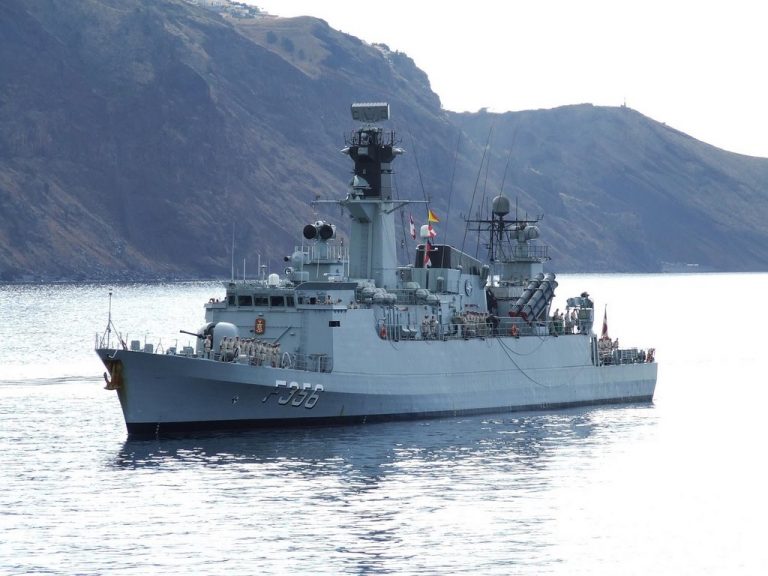
Offshore Patrol Vessels (OPV):
Although armed, these ships are designed for long duration fisheries and Coast Guard patrols in the Greenland and Faroes Islands areas. They each host an unarmed Lynx Mk.80 or 80A helicopter.
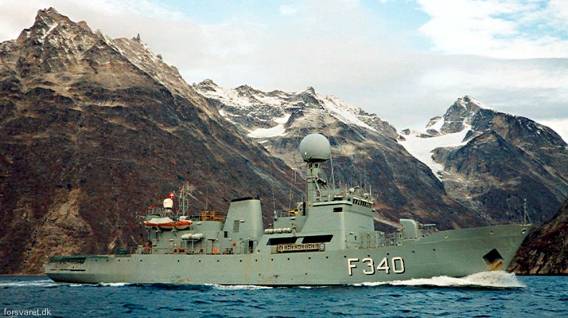
Beskytteren: This is a single ship built in the mid-1970s but is still serving (until 2000) augmenting the newer Thetis Class.
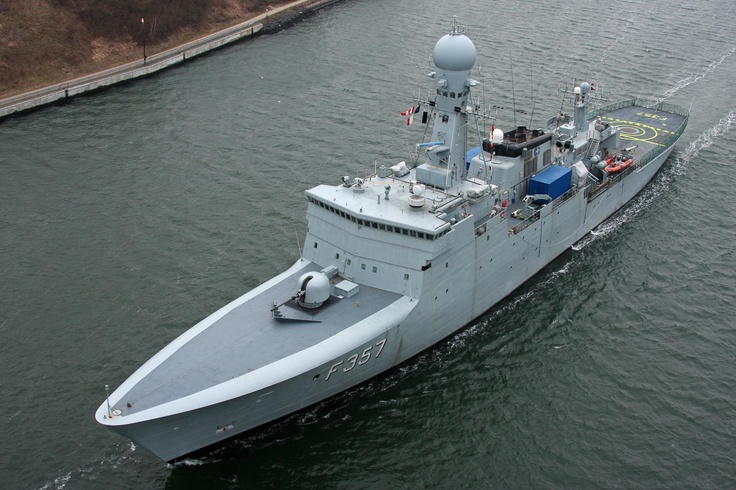
Thetis Class: These four ships are all newly commissioned (between 1991 and 1993) and have excellent modern sensors and communications capabilities. Displacing twice as much as the Niels Juel Class but with 30% fewer crew, they are double hulled to protect against ice damage and can break through 30 inches of solid ice.
| Pennant | Ship | Status | Location | Task |
|---|---|---|---|---|
| F 340 | Beskytteren | Active | Atlantic | |
| F 357 | Thetis | Active | Faroes | |
| F 358 | Triton | Active | Atlantic | |
| F 359 | Vædderen | Active | Greenland | |
| F 360 | Hvidbjørnen | Active | Atlantic |
Light Forces
In the confined waters of the Baltic approaches, the cut and thrust of light forces is critical. Using islands and narrow seas to shadow radar signatures, hide ambushing craft and allowing for quick escape lends itself to small, fast and powerful craft.
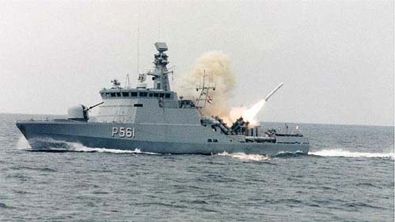
Flyvefisken class: This is a modern, configurable class which was a new and novel concept for most navies. Able to switch from a surveillance vessel, a Mine Countermeasures ship or a Combat Missile Boat configuration within hours provides a high degree of flexibility. Built in three ‘Series’ all but one of the boats are available for Northern Fury, both Series 1 and 2 are completed by January 1994 with the single ship 3rd Series still building.
| Pennant | Ship | Series | Configuration | Task |
|---|---|---|---|---|
| P550 | Flyvefisken (Flying fish) | Series 1 | MCM | |
| P551 | Hajen (Shark) | Series 1 | MCM | |
| P552 | Havkatten (Catfish) | Series 1 | MCM | |
| P553 | Laxen (Salmon) | Series 1 | MCM | |
| P554 | Makrelen (Mackerel) | Series 1 | MCM | |
| P555 | Støren (Sturgeon) | Series 1 | MCM | |
| P556 | Svæ rdfisken (Swordfish) | Series 1 | MCM | |
| P557 | Glenten (Kite) | Series 2 | Combat | |
| P558 | Gribben (Vulture) | Series 2 | Surveillance | |
| P559 | Lommen (Loon) | Series 2 | Surveillance | |
| P560 | Ravnen (Raven) | Series 2 | Combat | |
| P561 | Skaden (European magpie) | Series 2 | Combat | |
| P562 | Viben (Northern lapwing) | Series 2 | Combat |

Willemoes Class: A very potent class of missile craft, each equipped with 8x Harpoon missiles and 2 Torpedo tubes. A lot of firepower for a 24-man crew and able to travel at 38 Knts, this is the perfect type of close quarters missile boat for use in the restricted waters of the Baltic approaches.
| Pennant | Ship | Status | Location | Task |
|---|---|---|---|---|
| P540 | Bille | Active | Baltic | |
| P541 | Bredal | Active | Baltic | |
| P542 | Hammer | Active | Baltic | |
| P543 | Huitfeldt | Active | Baltic | |
| P544 | Krieger | Active | Baltic | |
| P545 | Norby | Active | Baltic | |
| P546 | Rodsteen | Active | Baltic | |
| P547 | Sehested | Active | Baltic | |
| P548 | Suenson | Active | Baltic | |
| P549 | Willemoes | Active | Baltic |
Submarines
The Danish Navy operates two class of submarine, both of German design. Both designs are small, maneuverable and very well suited to operating in shallow, congested waters. All Danish submarines were based at Frederikshaven and two were kept at sea at all times with two more ready for immediate deployment.
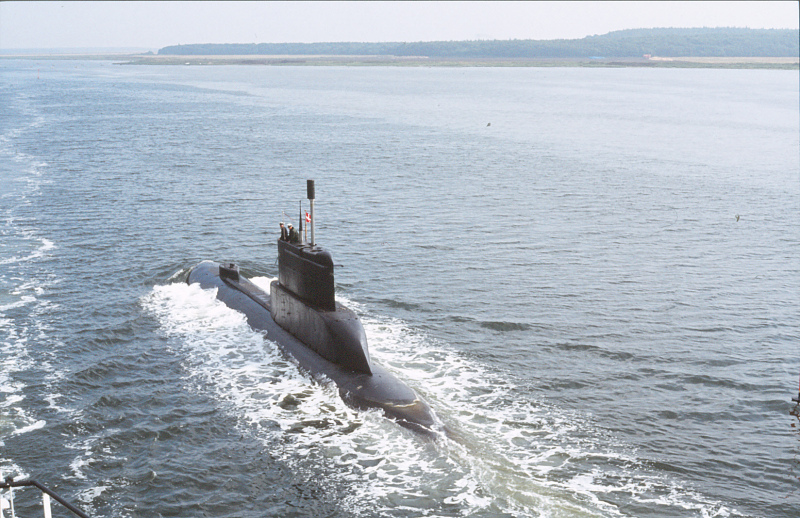
Narhvalen Class: These two modified Type 205 submarines were acquired in 1970, they were very small and with a crew of only 21 personnel were inexpensive to operate. A major drawback however, was that their torpedoes were only suitable for surface targets, and not other submarines, this was mitigated by operating them in coastal waters where they were supported by ASW helicopters.
| Pennant | Name | Status | Location |
|---|---|---|---|
| S 320 | Narhvalen | Active | In port |
| S 321 | Nordkaperen | Active | Patrolling off Bornholm Island |
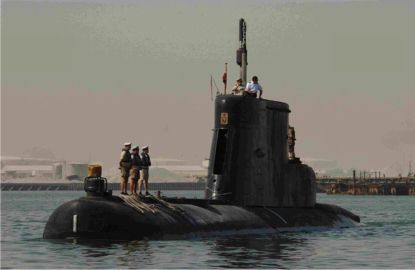
Tumleren class: These three boats were purchased (along with a 4th used for spare parts) from Norway in 1989-91. This was the Norwegian Kobben class which were a customized version of the German Type 205 and designated the Type 207. Although very similar to the Narhvalen Class, they were slightly larger, had a much better maximum dive depth, better sensors, and were able to track and target other submarines.
| Pennant | Name | Status | Location |
|---|---|---|---|
| S322 | Tumleren | Active | In port |
| S333 | Saelen | Refit | |
| S324 | Springeren | Active | Patrolling in the North Sea |